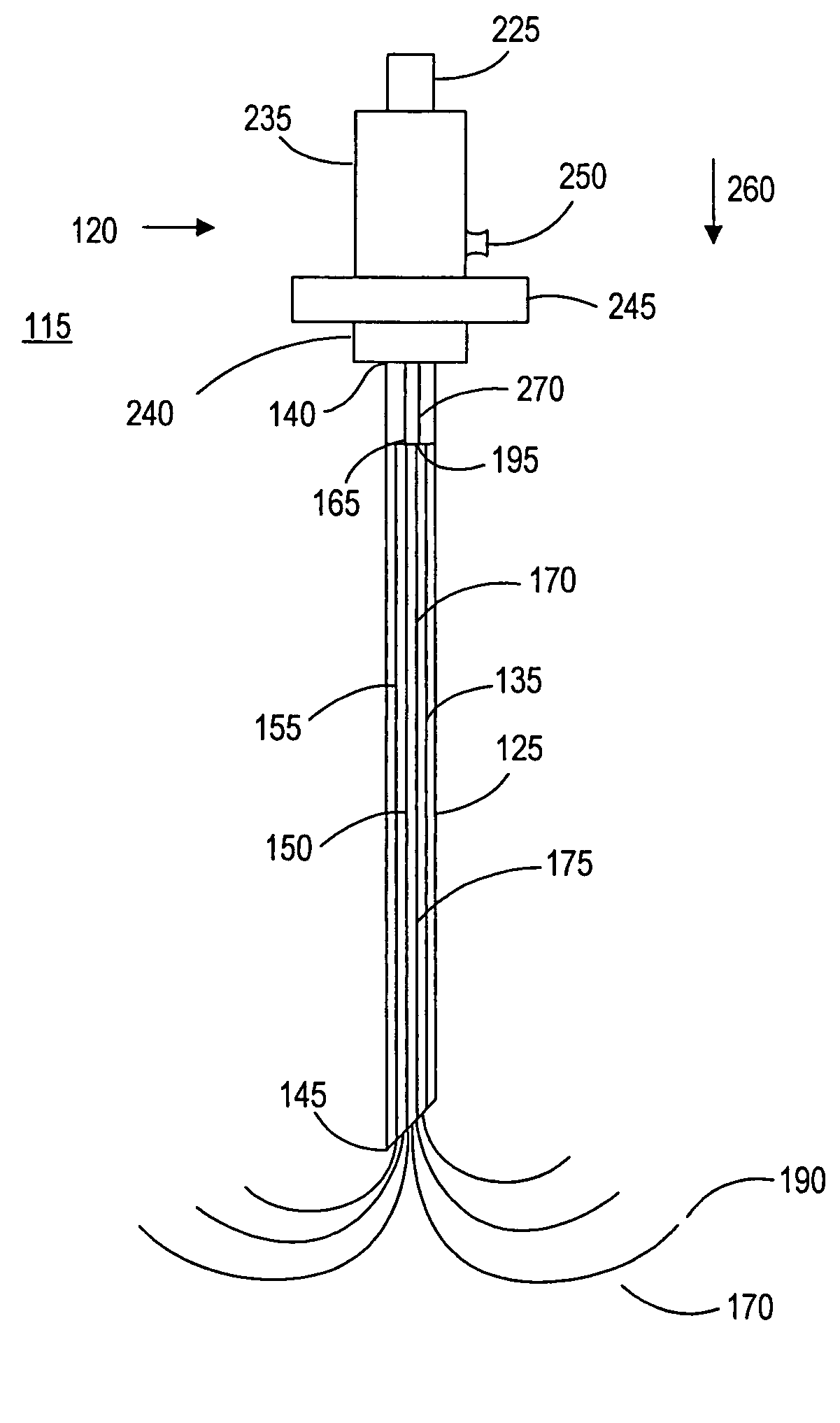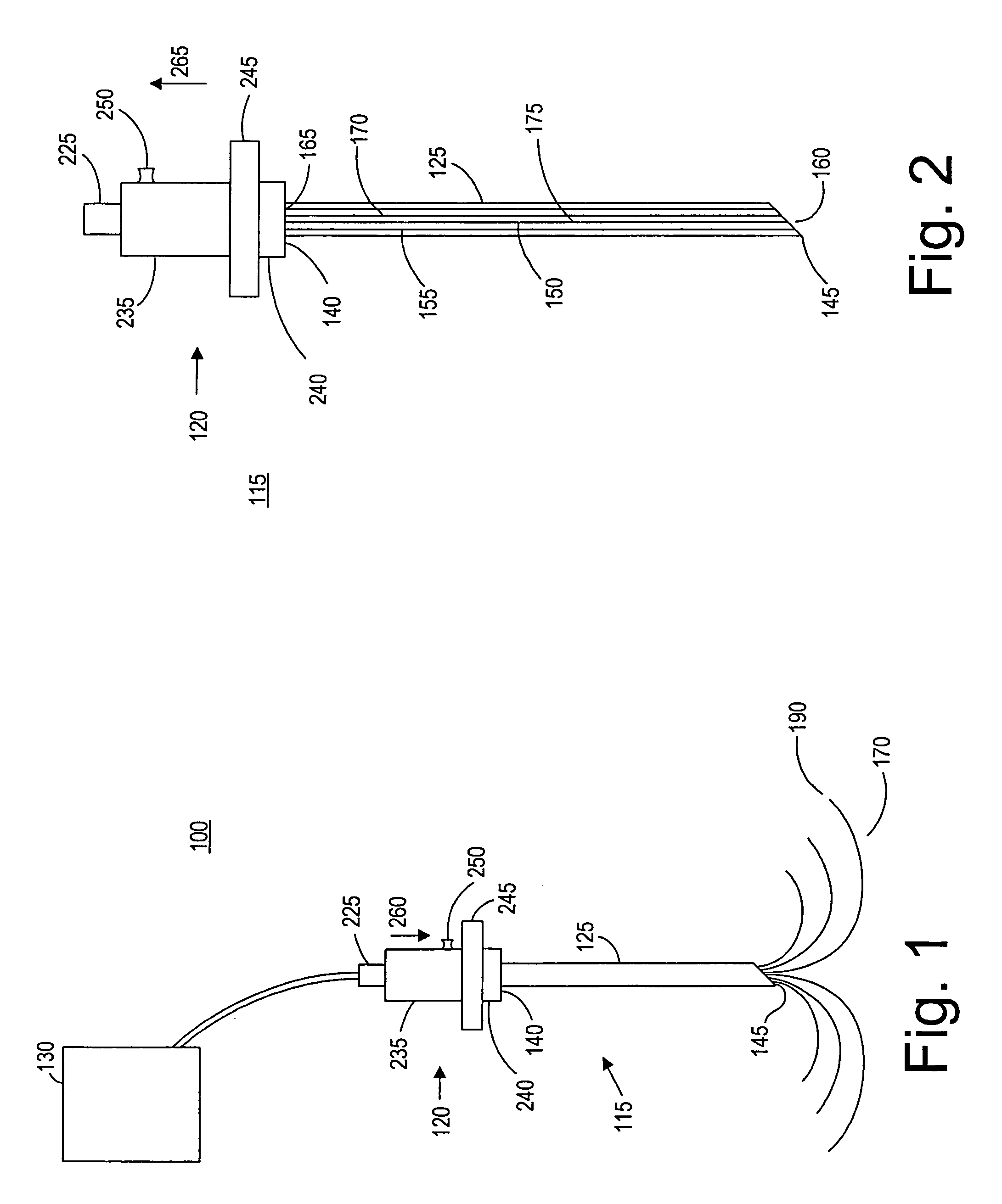Articulating radio frequency probe handle
- Summary
- Abstract
- Description
- Claims
- Application Information
AI Technical Summary
Benefits of technology
Problems solved by technology
Method used
Image
Examples
Embodiment Construction
[0032]FIG. 1 illustrates a tissue ablation system 100 constructed in accordance with a preferred embodiment of the present invention. The tissue ablation system 100 generally comprises an ablation probe assembly 115, which is configured for introduction into the body of a patient to ablate target tissue such as a tumor, and a radio frequency (RF) generator 130 configured for supplying RF energy to the probe assembly 115 in a controlled manner.
[0033]Referring specifically to FIGS. 2 and 3, the probe assembly 115 generally comprises a handle assembly 120, an elongated cannula 125, and an inner probe 135 slideably disposed within the cannula 125. The handle assembly 120 is mounted to the cannula 125 and includes a generator connector 225 that can be electrically coupled to the RF generator 130. As will be described in further detail below, the cannula 125 serves to deliver the active portion of the inner probe 135 to the target tissue. The cannula 125 has a proximal end 140, a distal e...
PUM
 Login to View More
Login to View More Abstract
Description
Claims
Application Information
 Login to View More
Login to View More - R&D
- Intellectual Property
- Life Sciences
- Materials
- Tech Scout
- Unparalleled Data Quality
- Higher Quality Content
- 60% Fewer Hallucinations
Browse by: Latest US Patents, China's latest patents, Technical Efficacy Thesaurus, Application Domain, Technology Topic, Popular Technical Reports.
© 2025 PatSnap. All rights reserved.Legal|Privacy policy|Modern Slavery Act Transparency Statement|Sitemap|About US| Contact US: help@patsnap.com



